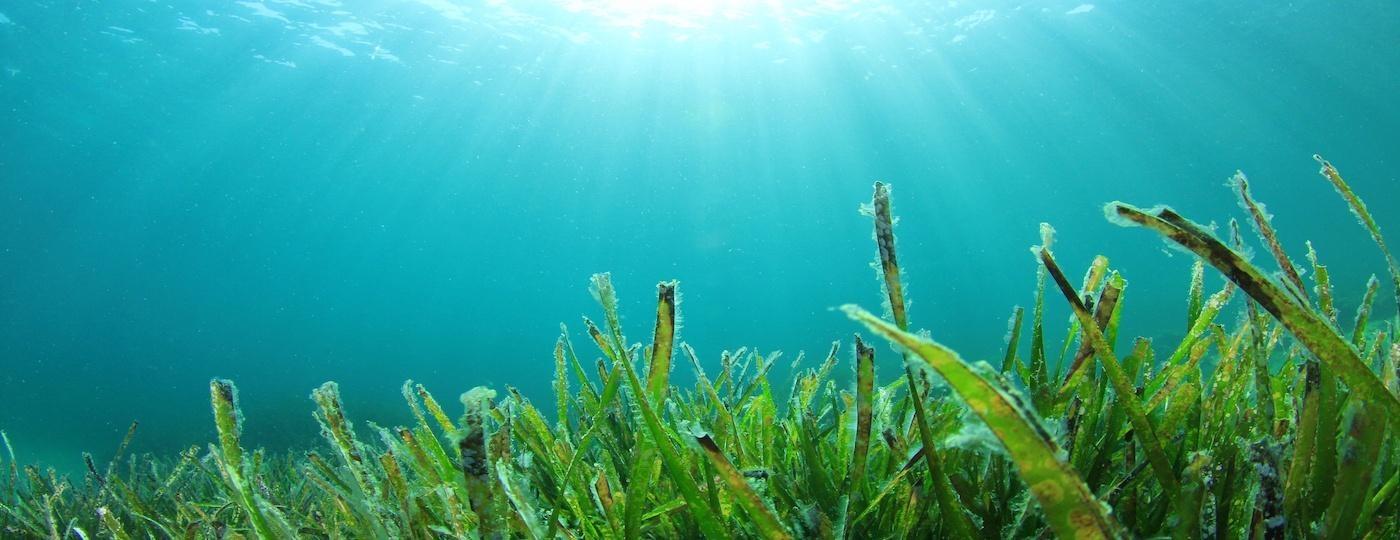Seagrasses are in Trouble and That's Bad News for Fish


If you like seafood, what’s growing underwater in North Carolina’s estuaries is vitally important to the future of your next meal.
It’s seagrass. Yep, literally, grass that grows in shallow coastal waters. And it turns out, North Carolina is home to the highest acreage of seagrass on the Atlantic coast.
It’s officially called submerged aquatic vegetation (SAV) and it’s really important because it protects against shoreline erosion, improves water quality and provides habitat for fish and waterfowl. It’s where your seafood dinner grows up before heading out to sea. In short, it makes for both a healthy estuarine ecosystem as well as coastal communities.
But SAV is in trouble, not only in North Carolina but around the world because of pollution and habitat destruction. In fact, researchers estimate almost one-third of the world’s seagrass has been lost over the last 40 years. And there is a cost to that destruction.
A new report from Duke University and North Carolina State University details the economic losses associated with the decline of SAV in the Albemarle-Pamlico estuary.
The project analyzed data from other studies to create a picture of the economic cost of SAV loss over the next ten years. They focused on four main categories: commercial fishing, recreational fishing, carbon sequestration and home values.
The group then looked at a range of losses and the associated cost. If SAV in the estuary declines by 5% in the next 10 years, it would cost the state an estimated $8.6 million in 2019 dollars. If SAV declines by 50%, the cost is projected to be $88.8 million.
Those losses are sometimes easy to understand. Fisheries would be impacted by the loss of nursery habitat. There’s a cost to fewer fish being caught. In other cases, the loss would affect people without them realizing it. That includes the value of a home on the coast.
“The idea is that when the SAV declines, we lose some of the value that we get from these ecosystem services,” said Dr. Sara Sutherland, an environmental economist at Duke University told Coastal Review Online. Sutherland is a co-primary investigator for this report.
“That value is capitalized into the property value for homeowners,” adds Sutherland. “It’s important we understand the value of our natural resources.”
“SAV is critical to maintaining good water quality in the estuary,” said Dr. Timothy Ellis, a quantitative ecologist for the Albemarle-Pamlico National Estuary Partnership, or APNEP which helped fund the study.
“But it also requires good water quality to grow,” adds Ellis.
You could call it a cycle of destruction.
Sunlight can’t reach the seagrass on the bottom of the estuary if the water is too polluted. That makes it harder for the seagrass to grow. But one of the primary benefits of seagrass is that it helps clean the water.
Ellis hopes the report helps people understand the importance of seagrass and that it makes the loss of the underwater vegetation more relatable. It’s hoped that could fuel efforts or legislation to restore and protect SAV. The easiest way to do that is to protect water quality.
Learn more about the different types of seagrass and its importance in the Sci NC story below.
Sea grass is a common site along the coast, visible from shore and from a boat. But scientists are only now learning more about the importance of sea grass as a nursery, water cleaner and shoreline protector.